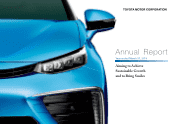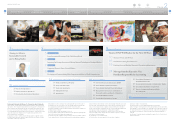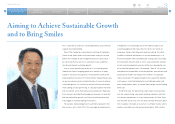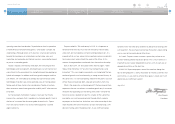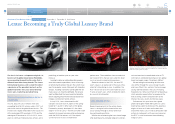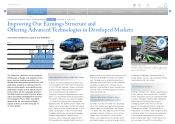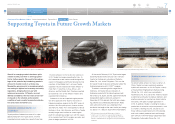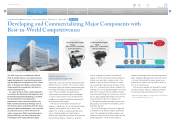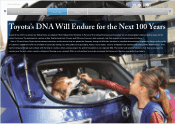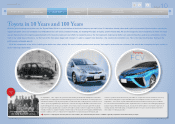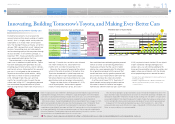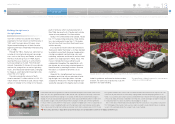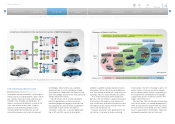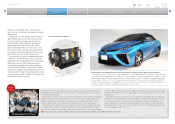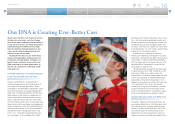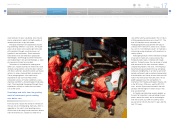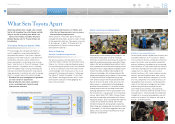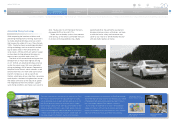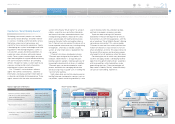Toyota 2014 Annual Report Download - page 11
Download and view the complete annual report
Please find page 11 of the 2014 Toyota annual report below. You can navigate through the pages in the report by either clicking on the pages listed below, or by using the keyword search tool below to find specific information within the annual report.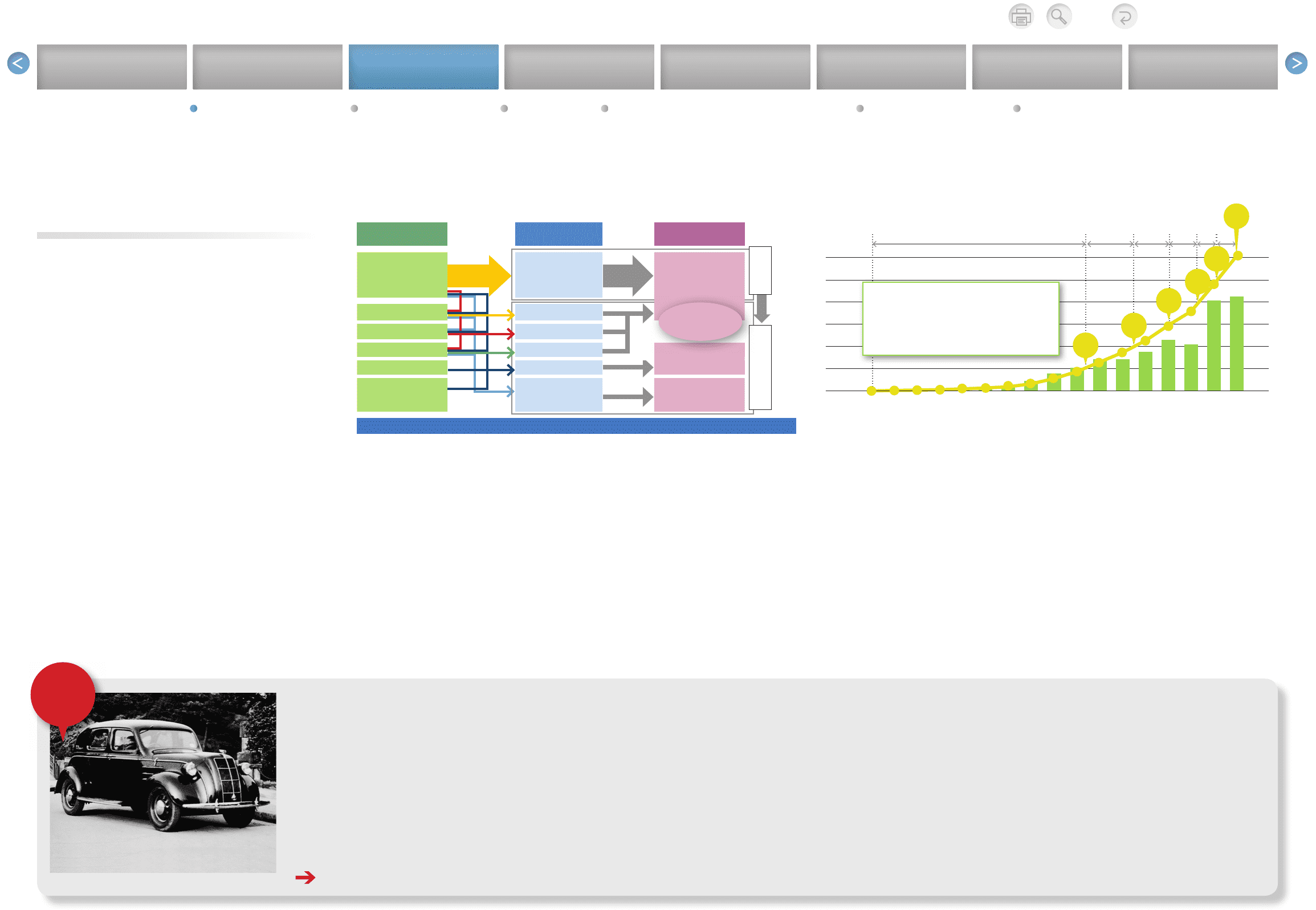
ANNUAL REPORT 2014
President’s MessagePresident’s Message
Overview of
Four Business Units
Overview of
Four Business Units
Special FeatureSpecial Feature
Review of OperationsReview of Operations
Consolidated Performance
Highlights
Consolidated Performance
Highlights
Management and
Corporate Information
Management and
Corporate Information
Investor InformationInvestor Information
Financial SectionFinancial Section
Page 11
NextPrev
ContentsSearchPrint
Popularizing environment-friendly cars
Environmental concerns must be taken into
account when we think about creating a “mobility
society” (that is, a highly mobile society reliant on
automobiles as its major means of transporta-
tion). The Guiding Principles at Toyota, set forth in
January 1992, declared that we will “dedicate our
business to providing clean and safe products
and to enhancing quality of life everywhere through
all of our activities.” In line with this principle, in
December 1997, Toyota launched the world’s first
mass-produced hybrid vehicle, the Prius.
The environment is still a top-priority manage-
ment issue. In addition to hybrid vehicles, Toyota
has been developing next-generation eco cars,
including plug-in hybrid vehicles, electric vehicles,
and fuel cell vehicles. Believing that the spread of
eco cars is in itself good for the environment,
Toyota has focused on hybrid vehicles, selling
more than six million in total as of December
2013. Although it took nine years and nine
months for cumulative sales to reach the one
million mark in May 2007, strengthening demand
has accelerated the popularization of hybrids.
After passing the four million mark in April 2012, it
took only 11 months for cumulative sales to break
five million in March 2013, and another nine
months to hit six million in December 2013.
Based on the concept of producing the optimal
vehicle in the optimal location at the optimal time,
Toyota has broadened its hybrid lineup and now
offers at least one in each automobile category.
We believe hybrids have finally entered a full-scale
growth phase and are no longer niche products.
Toyota calculates that as of December 31, 2013,
use of Toyota hybrids* had resulted in approxi-
mately 41 million fewer tons of CO2 emissions**
than would have been emitted by gasoline-powered
vehicles of similar size and driving performance.
Toyota also estimates that the use of its hybrid
vehicles has saved approximately 15 million kiloli-
ters of gasoline compared with the amount that
would have been used by gasoline-powered vehi-
cles of similar size. Hybrid vehicles offer lower CO2
emissions and lower fossil fuel consumption.
As of the end of August 2014, Toyota has 27
hybrid models and one plug-in hybrid model on
the market in about 80 countries and regions.
Furthermore, within the next two years (2014 and
2015), we plan to launch a total of 15 new hybrid
models worldwide. Taking advantage of our
pioneer status, we will continue adding to this
lineup and increasing the number of countries and
regions where we sell hybrids, with the ultimate
aim of popularizing eco cars around the world.
* Excludes the Coaster hybrid electric vehicle and the Quick
Delivery 200 model.
** Number of registered vehicles × distance traveled × fuel
efficiency (actual fuel efficiency in each country) × CO2
conversion factor
Kiichiro Toyoda’s passion and commitment to developing an automobile industry in Japan were tested
repeatedly. When he began, there were no steelmakers in Japan developing the sheet steel needed for
automobiles. Toyoda found himself having to establish new business units, such as the Steel Production
Department (which later became Aichi Steel Corporation) alongside the Automotive Department.
After numerous failures, Toyoda finished building the first prototype Model G1 Truck on August 25, 1935,
and the truck launched in December of that year. Over the following year, a total of 14 Model G1 Trucks
were sold. At the behest of the government, truck development took priority, but Toyoda had also
completed a prototype Model A1 passenger car in May 1935, and was able to put it on the market in 1936
as the improved Model AA—its first mass-produced passenger car. Only two years after establishing the
Automotive Department, Toyoda had launched an automobile business in line with his conviction, “once you
start a new business, moving quickly makes the most economic sense.”
1935, the year Toyoda began to produce automobiles, was also the year that he laid down his vision for the
future, which led to today’s Toyota Global Vision. On October 30, 1935, the fifth anniversary of the death of his
father, Sakichi Toyoda (1867-1930), Kiichiro Toyoda set down in writing some of his father’s core values before
announcing the Model G1 Truck. Sakichi Toyoda was the founder of today’s Toyota Group as well as an inven-
tor in his own right with numerous patents and new practical designs in his name, both in Japan and abroad.
On August 28, 1937, the Automotive Department was spun off into Toyota Motor Co., Ltd. In 1940,
annual automobile output was 46,000 vehicles in Japan, compared with 4,470,000 vehicles in the United
States, an enormous difference in scale and capability.
The endeavor to make a Japanese automobile from nothing to a finished product was an ordeal, involving identifying defects and solving problems one by one.
Toyota’s
DNA
Diversification of Automotive Fuels and Powertrains
1,800 6
1,500 5
1,200 4
900 3
600 2
300 1
1997 1999 2001 2003 2005 2007 2009 2011 2013
(CY)
Annual sales Cumulative sales (right scale)
0
117
months 27
months 18
months 14
months
11
months 9
months
(Thousands
of units)
(Millions
of units)
0
1
million
2
million
3
million
4
million
5
million
6
million
Innovating, Building Tomorrow’s Toyota, and Making Ever-Better Cars
HV global sales
•2012: Achieved1millionannualunitssales
for the first time
•Mar.2013:Cumulativesalespassed5millionunits
•Dec.2013:Cumulativesalespassed6millionunits
Worldwide Sales of Toyota Hybrids
Entering the Automotive
Business
Model AA
Basic
technologies
Conserve
Primary energy
source Automotive fuel Powertrain
Oil Gasoline
Diesel
Conventional and
hybrid vehicles
Natural gas Gaseous fuels
Coal Synthetic fuels
Plants Biofuels EVs
Uranium Electricity
Hydro, solar,
geothermal electricity
generation
Hydrogen FCVs
While working to reduce energy use, we must also diversify fuels
Next-generation
technologies
PHVs
Toyota in 10 Years and 100 Years [2 of 6] Our DNA is Creating Ever-Better Cars What Sets Toyota Apart Enriching Lives and Building Tomorrow’s Toyota through Innovation New Values for the Next Hundred Years Message from the Executive Vice President Responsible for Accounting
Diversify

